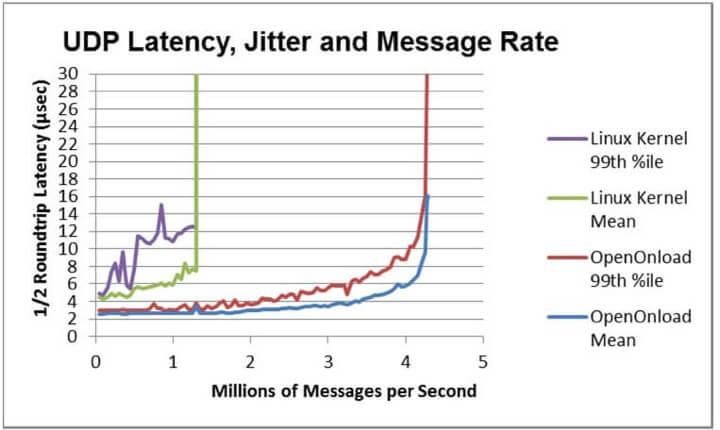Read about the evolution of trading systems started in Part I.
Shift to the low latency architectures
With the building blocks of an automated trading system in place, the strategies now have the ability to process huge amounts of data in real-time and make quick trading decisions.
Today, with the advent of standard communication protocols like FIX, the technology entry barrier to setting up an algorithmic trading desk or an automated trading system, has become lower. ⁽³⁾
Consequently, the automated trading domain has become more competitive.
As servers got more memory and higher clock frequencies, the focus shifted towards reducing the latency for decision-making.
Over time, reducing latency has become a necessity for many reasons, such as:
- The strategy makes sense only in a low-latency environment.
- Survival of the fittest – competitors pick you off if you are not fast enough.
The problem, however, is that latency is an overarching term that encompasses several different delays. Although latency is very easily understood, it is quite difficult to quantify. It, therefore, becomes increasingly important as to how the problem of reducing latency is approached.
If we look at the basic life cycle in an automated trading system, the steps are as follows:

- A market data packet is published by the exchange.
- The packet travels over the wire.
- The packet arrives at a router on the server side.
- The router forwards the packet over the network on the server side.
- The packet arrives on the Ethernet port of the server.
- Depending on whether this is UDP/TCP, processing takes place, and the packet makes its way to the memory of the adapter.
- The adaptor then parses the packet and converts it into a format internal to the algorithmic trading platform.
- This packet now travels through the several modules of the system – CEP, tick store, etc.
- The CEP analyses and sends an order request.
- The order request again goes in reverse from here as the market data packet.

In an automated trading system design, high latency at any of these steps ensures a high latency for the entire cycle. Hence latency optimisation usually starts with the first step in this cycle that is in our control i.e., “the packet travels over the wire”. The easiest thing to do here would be to shorten the distance to the destination as much as possible. The best way to do this is via colocation.
Colocation is the facility provided by exchanges to host the trading server near the exchange.
Recommended course:
Next is the levels of sophistication in automated trading.
Levels of sophistication in automated trading
The world of high-frequency algorithmic trading has entered an era of intense competition. With each participant adopting new methods of ousting the competition, technology has progressed by leaps and bounds.
Modern-day algorithmic trading architectures are quite complex compared to their early-stage counterparts. Accordingly, advanced automated trading systems are more expensive to build both in terms of time and money.
Below is the table covering the different network cards that are used for automated trading and the various aspects of the same.
| Aspect | Standard 10GE network card | Low latency 10GE network card | Field Programmable Gate Array (FPGA) | Application Specific Integrated Circuit (ASIC) |
| Latency | 20 microseconds + application time | 5 microseconds + application time | 3-5 microseconds | Sub microsecond latency |
| Ease of deployment | Trivial | Kernel driver installation | Retraining of programmers | Specialists |
| Man years effort to develop | Weeks | Months | 2-3 man-years | 2-3 man-years |
Building an entire automated trading system can be beyond the scope of an individual retail trader. Traders who want to explore the algorithmic way of trading can opt for automated trading systems that are available in the markets on a subscription basis.
A trader can subscribe to these automated systems and use the algorithmic trading strategies that are made available to the users of these systems. Traders, who know programming can formulate and backtest their strategies in programming platforms like Python and C.
Stay tuned for Part III to see the steps to build an automated trading system.
Originally posted on QuantInsti blog.
Disclosure: Interactive Brokers
Information posted on IBKR Campus that is provided by third-parties does NOT constitute a recommendation that you should contract for the services of that third party. Third-party participants who contribute to IBKR Campus are independent of Interactive Brokers and Interactive Brokers does not make any representations or warranties concerning the services offered, their past or future performance, or the accuracy of the information provided by the third party. Past performance is no guarantee of future results.
This material is from QuantInsti and is being posted with its permission. The views expressed in this material are solely those of the author and/or QuantInsti and Interactive Brokers is not endorsing or recommending any investment or trading discussed in the material. This material is not and should not be construed as an offer to buy or sell any security. It should not be construed as research or investment advice or a recommendation to buy, sell or hold any security or commodity. This material does not and is not intended to take into account the particular financial conditions, investment objectives or requirements of individual customers. Before acting on this material, you should consider whether it is suitable for your particular circumstances and, as necessary, seek professional advice.
















Join The Conversation
If you have a general question, it may already be covered in our FAQs. If you have an account-specific question or concern, please reach out to Client Services.